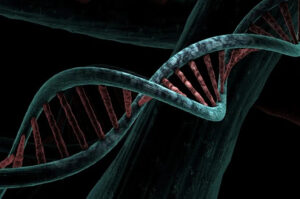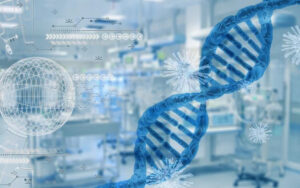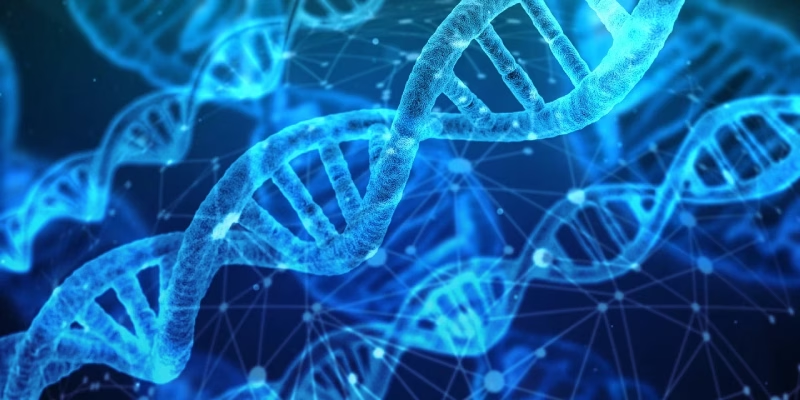The Basics of DNA
Have you ever wondered what makes you, well, you? The answer lies in the tiny, twisted ladders known as DNA, the genetic blueprint that defines every living organism on Earth. DNA, or deoxyribonucleic acid, is a molecule that carries the instructions for the development and function of all living things. It’s like a recipe book, but instead of containing instructions for your favorite dishes, it contains instructions for building and maintaining every cell in your body.
DNA is broken down into smaller sections called “genes.” Each gene is responsible for a specific trait or characteristic, like hair color, height, or even your risk of developing certain diseases. It’s like having a separate recipe for each dish in the book.
These genes are stored in structures called chromosomes. Chromosomes are like the binders that hold all the recipes (genes) together. Humans have 23 pairs of chromosomes, one set inherited from each parent.
The DNA Library Analogy
Imagine that your DNA is a vast library, filled with billions of books (genes). Each book contains instructions for a specific trait or characteristic, like how to make your hair curl or how to metabolize certain foods. The books are organized into sections (chromosomes), making it easier to find the information you need.

The Dynamic Nature
But here’s where things get really fascinating. Your DNA library isn’t just a static collection of books; it’s a living, breathing entity that is constantly being read, copied, and updated. Every time a cell in your body divides, it must make a copy of its entire DNA library to pass on to the new cell. It’s like having a team of librarians working around the clock, meticulously copying each book, and ensuring that the information is passed on accurately.
Mutations and Evolution
Just like a library, your DNA can experience wear and tear over time. Mutations, or errors in the copying process, can occur, leading to changes in the instructions within the books. Some mutations are harmless, while others can have more significant consequences.

But here’s the remarkable part: your DNA library isn’t just a passive repository of information; it’s a dynamic, ever-changing entity that can adapt and evolve over time. Through the process of natural selection, the most advantageous mutations are passed down from generation to generation, allowing species to adapt to their changing environments.
The Interplay between Nature and Nurture
While we often think of DNA as the sole determinant of our physical characteristics, it’s important to remember that our environment plays a crucial role as well. It’s like having a recipe book that provides instructions for baking a cake, but the final result will depend on factors like the quality of the ingredients, the temperature of the oven, and the skill of the baker.
In the same way, our DNA provides the blueprints for our development, but our environment (including things like diet, exercise, and exposure to toxins) can influence how those blueprints are expressed. This interplay between nature and nurture is what makes each of us a unique and fascinating individual.
The Complexity and Beauty
Now, let’s take a moment to appreciate the sheer complexity and beauty of DNA. Consider this: if you were to unravel the DNA in a single human cell and stretch it out end-to-end. It would be about two meters long. And if you were to take all the DNA in a single human body and lay it out in a straight line, it would stretch from Earth to the Sun and back again, a mind-boggling distance of nearly 300 million kilometers!

So, the next time you look in the mirror, remember that you’re gazing upon a living, breathing embodiment of incredible complexity and beauty. You are a walking, talking testament to the wonders of life, a masterpiece of evolution and adaptation that has been billions of years in the making.
While the study of DNA may seem like a complex and daunting field, understanding its basic principles is within reach for anyone with curiosity and a willingness to learn. So, embrace the wonder of DNA and let it inspire you to explore the fascinating world of genetics and the building blocks of life.
Frequently asked questions
1. What is DNA and what is its purpose?
DNA (deoxyribonucleic acid) is a molecule that carries the genetic instructions used in the growth, development, functioning, and reproduction of all known living organisms. It serves as the hereditary material, passing on traits from parents to offspring.
2. How is DNA structured?
DNA structures itself as a double-helix, which resembles a twisted ladder. Paired bases (adenine with thymine, and guanine with cytosine) form the “rungs” of the ladder, while alternating phosphate and sugar molecules form the sides.
3. Where is DNA located in the cell?
In humans and other complex organisms, cells store DNA in their nuclei, and mitochondria (the energy-producing structures) also contain DNA. In simpler organisms like bacteria, DNA is free-floating in the cytoplasm.
4. How does DNA determine our traits?
DNA contains genes that provide instructions to make proteins. These proteins influence our physical traits like eye color, height, and even behaviors and disease risk by regulating biological processes in the body.
5. Can DNA change or mutate?
Yes, changes or mutations can occur in DNA during the process of DNA replication or due to environmental factors like radiation exposure. Most mutations are neutral, but some can be harmful and increase disease risk, while others can be beneficial and get passed on through evolution.
RELATED
AI in Health Care – Understand the Role of AI in healthcare and our day-to-day lives.
References:
1. National Human Genome Research Institute. (n.d.). Deoxyribonucleic Acid (DNA). Retrieved from https://www.genome.gov/genetics-glossary/Deoxyribonucleic-Acid
2. Genetics Home Reference. (n.d.). What is a gene? Retrieved from https://ghr.nlm.nih.gov/primer/basics/gene
3. National Human Genome Research Institute. (n.d.). Chromosomes. Retrieved from https://www.genome.gov/genetics-glossary/Chromosomes
4. Mukherjee, S. (2016). The Gene: An Intimate History. Scribner.
5. Ridley, M. (2003). Nature via Nurture: Genes, Experience, and What Makes Us Human. HarperCollins.
6. Wikipedia https://en.wikipedia.org/wiki/DNA

